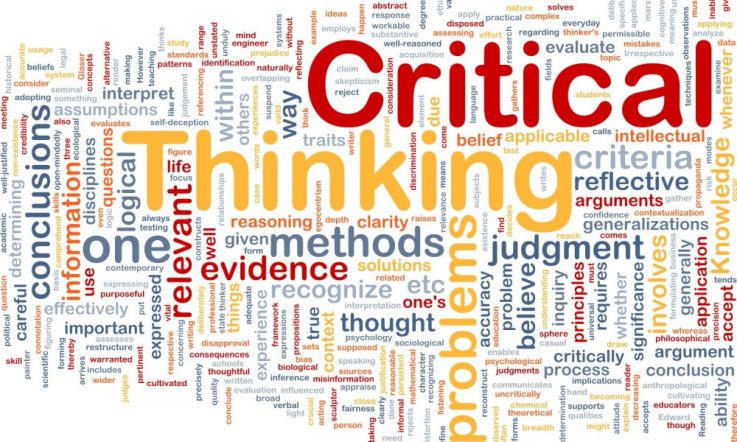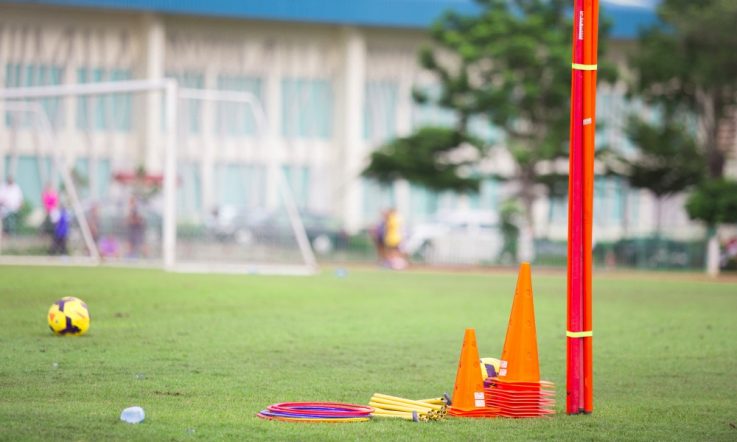In today's reader submission, Dr John Langrehr argues creative, curious and challenging thinking is of increasing importance in today's world, yet many school programs don't do enough to help students develop this ‘3C thinking'. He discusses how teachers can develop student mindsets for thinking, and shares examples of questions and statements you can use in the classroom.
3C thinking is not 3R thinking
Reading, ‘rithmetic and remembering (3R thinking) dominates classroom thinking. It involves storing, recalling, and using previously learned information. Questions testing 3R thinking have a correct answer and that is why they are used to test the memory of facts, rules, principles etcetera. It is not used to create new information. Students good at 3R thinking have success at school but studies show they may not be good at 3C thinking.
3C thinking dominates thinking away from school. It is used by individuals to create new information by thinking of their own new ideas, reasons, and decisions. These so-called ‘higher forms of thinking' result in a variety of possible answers to a question. There are no right or wrong answers to recall.
This kind of thinking is needed when we try to solve practical problems, or to design and use new things. It is used when we decide whether to accept or reject the statements and opinions of others, and when we wonder why something has the features that it has. In short, 3C thinking involves creative, curious, and challenging thinking.
In the fourth of his 2008 Boyer Lectures, Rupert Murdoch said international companies were craving graduates that ‘have a sense of creativity, a curiosity about the world, an ability to think for oneself.'
In our rapidly changing world that is flooded with advertisements, statements, and opinions via the internet, 3C thinking by students is now of increasing importance. Yet, many school programs do not do enough to develop it.
Developing mindsets needed for 3C thinking
In order to learn 3C thinking, students need to learn or develop some essential mental attitudes or mindsets that are used in these types of thinking. Thinking by ourselves is hard mental work and so we need to develop some positive attitudes to encourage us to make a start.
These mindsets, or mental attitudes, can be seen forming to different extents in early childhood children. For example, some children are imaginative and risk taking – helping creative thinking. Others are just the opposite. Some children are questioning and reason seeking – helping curious thinking. Others are just the opposite. And some are challenging and non-accepting – helping critical thinking. Others are just the opposite.
These are just some of the mindsets that are important for independent thinking and self-learning in life beyond the classroom.
Students need to hear how good thinkers think about a common task or question. What mindsets do they have that motivates them to be good at creative, critical, or curious thinking? Traditional early childhood programs are based on the belief that manipulative and social activities will improve student thinking, but this is more likely to happen if students are asked to think about their ideas, reasons, and decisions to answer a thought-provoking question.
Designing thought-provoking questions
Thought-provoking questions need to be specially designed in order to stimulate creative, curious, and challenging thinking that occurs in the forebrain. The questions have more than one possible answer, so memory is not as important as independent thinking.
First you need to have a definition of the 3Cs – then you can design different multi answer questions that stimulate each. Here are definitions and some sample questions you can use in the classroom to develop student mindsets needed for the 3Cs.
Creative thinking – the ability to break away from dominant patterns stored in the brain in order to think of unusual solutions.
Unusual alternatives: How many unusual uses can you think of for a newspaper?
Unusual similarities: In how many ways is an elephant the same as a chair?
Unusual consequences: What if there were no more birds in the world?
Unusual reversals: What can't you see?
Unusual images: What does this line drawing remind you of?
Unusual designs: What can you combine, reverse, eliminate, add to, use alternatives … in order to make a new breakfast cereal?
These multi answer questions stimulate the thinking areas of the forebrain. Creative thinking is helped with a risk taking, open minded, flexible, imaginative mindset which helps the thinker break away.
Curious thinking – the ability to think of reasons for explaining why something has the features that it has.
Shape: Why are coins round?
Colour: Why are stop lights red? Why are road signs white on green?
Parts: Why does a dog have four legs and not two or six?
Material: Why are bottles made of glass?
Size: Why do turtles lay so many eggs and birds only a few?
These multi answer questions stimulate the thinking areas of the forebrain. Curious thinking is helped with an analytic, questioning, reason seeking mindset.
Challenging or critical thinking – the ability to judge statements using relevant criteria or reasons.
Fact/opinion: Why isn't it a fact that dogs make better pets than cats?
Believable/unbelievable: Why would or wouldn't you believe a claim made by someone who said they saw a flying saucer last night?
Relevant/irrelevant: What are some important or relevant things to tell people who are helping you to find your lost dog?
Another point of view: What are some good and bad things about keeping animals in zoos?
Making conclusions: What can and can't you conclude if you see a man running quickly out of a shop?
Biased/unbiased information: Is this advert biased or not?
Critical thinking is helped with an analytic, questioning, cautious, judgmental mindset.
Testing 3C thinking
Questions based on all of the examples above can be used in designing pencil and paper tests. They can also be embedded in the dialogue of interactive, cartoon stories.
In my own work, cartoon tests of 3C thinking have been designed and used with early childhood children in Singapore. Teachers use them on a 1:1 basis. They read instructions on each cartoon test item and then record the number of acceptable answers. These tests were not suitable for use with young, frightened students.
The best indicator of improvement with 3C thinking in young early childhood is parent feedback on observed differences in student behaviour at home. For example:
- Do your children ask more ‘why' and ‘how' questions at home?
- Do your children regularly use terms such as ‘opinion', ‘evidence', ‘relevance', and ‘bias'?
- Do your children suggest ideas for solving small, practical problems?
- Do your children ask why things have the appearance that they have?
Middle years tests of 3C thinking include multiple choice questions. The interactive cartoon stories have 3C questions embedded in their dialogue and scores can be calculated. Tests of 3C thinking, including those with multiple choice questions, have also been designed for older students and adults.
Research using such tests with more than 170 Grade 7-9 students in South Australia, found that students selected for ‘gifted classes' do no better than their peers (Langrehr, 2006). This suggests they have been selected on their ability to excel at correct answer, or ‘3R thinking'.
References
Langrehr, J. (2006). New ways for identifying gifted thinkers. Gifted, (140), 11-14.
Think about your own classroom teaching. How do you encourage creative, curious and challenging thinking? How often do you ask multi answer questions?
With a colleague, or in a group, take a look at the sample questions written by the author and come up with some possible answers. Now, choose one of the three Cs and have a go at writing your own questions.



